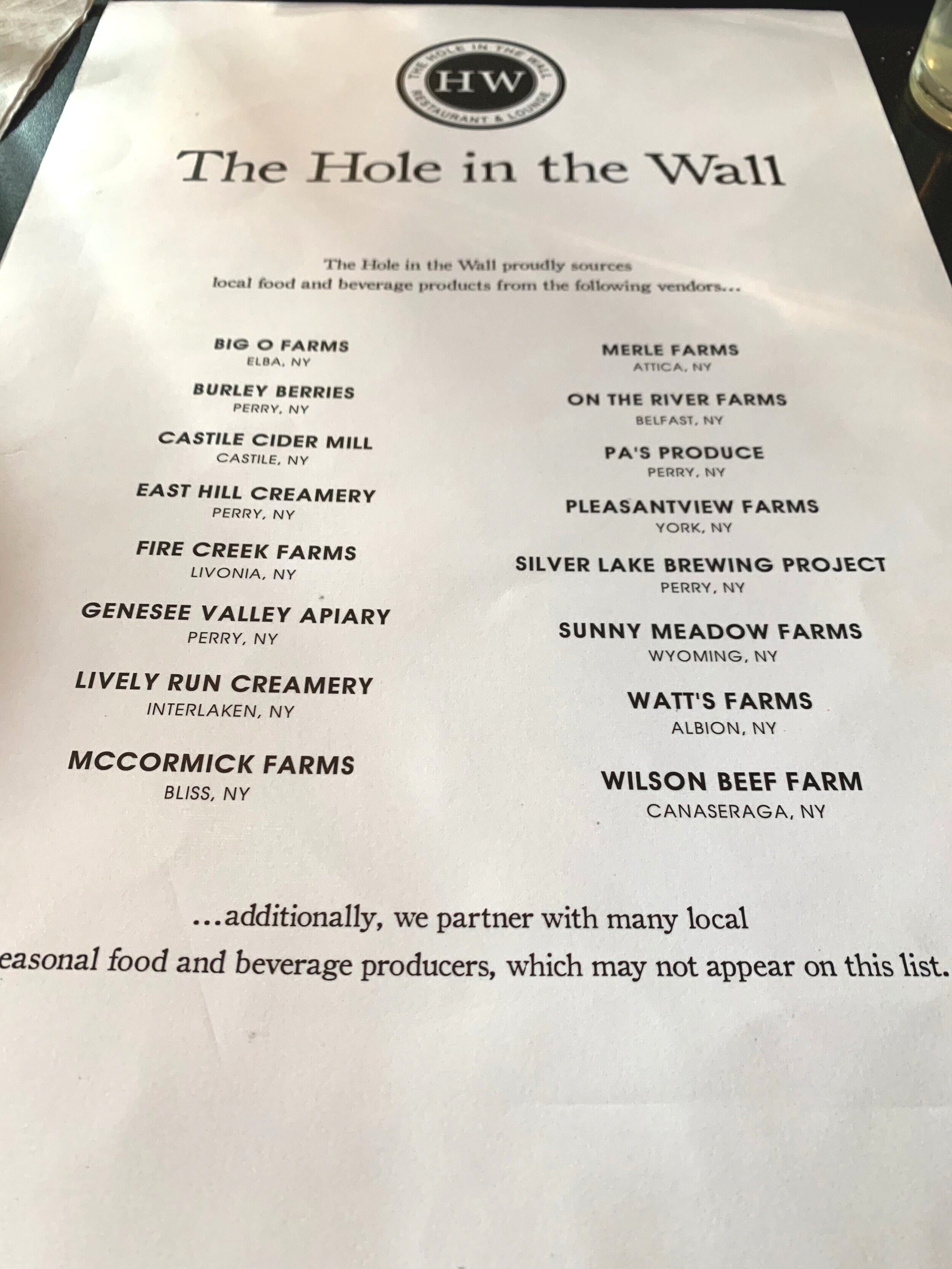The landscape of food in upstate New York is changing. While the Finger Lakes region is responsible for a quarter of the state’s agricultural output, local residents in Western New York have traditionally felt the need to leave the area to experience new food and beverage trends. However, thanks to the state’s policy initiatives and innovative farmers, chefs, and business owners, there are more opportunities than ever before to enjoy what New York has to offer.
Although the wine industry currently brings tourists to the area, the food scene has lagged behind. The Finger Lakes Regional Economic Development Council has recognized that consumers want more organic and locally-sourced food. The council has identified $1.3 billion in private investments to improve the entire food value chain, ranging from research to equipment to infrastructure. At the same time, local schools like Monroe Community College, Finger Lakes Community College, and Genesee Community College provide programs in food studies, viticulture, and food processing technology so that a workforce will be available to fill the jobs these investments create. The New York State Division of Agricultural Development, meanwhile, helps support the over 700 farmers’ markets in the state.
Two new local food incubators, FreshLAB in Batavia and the Commissary in Rochester, aim to help new restaurants, beverage companies, and small-batch food producers get started in the area. Created to help keep residents’ dining and entertaining money local, FreshLAB provides to entrepreneurs everything from a commercial kitchen to WiFi to mentorship. In Sibley Square in Rochester, the Commissary, opening later in 2019, will offer hourly kitchen space to aspiring grocery suppliers as well as food-focused workshops and cooking classes to the general public.
The Hole in the Wall Restaurant in Perry lists many local suppliers on their menu.
The relationship between food and agricultural businesses in the region is also evolving. When Jacquie Billings and Travis Barlow joined forces at the Hole in the Wall Restaurant in Perry in 2005, they had to grow their own produce. Now, after years of building relationships with local farmers, creameries, apiaries, and the like, they joke their garden is overgrown with weeds and instead tend to the growing list of producers they promote on their menu.
Chef Brian Simmons who runs the historic Yard of Ale in Piffard has also been a pioneer in transforming the region’s food scene, making sustainability a key focus of his cuisine and partnering with local food and beverage producers like the Abbey of the Genesee, Deer Run Winery and Pleasant View Farm.
Executive Chef Sean Wolf, formerly at Farmer’s Creekside Tavern in Leroy, says the choice to focus on farm-to-table dining was obvious to him: “The fewer miles the food has to travel, (the) better for the quality of the food and (the) better for the environment… It also gives us (an opportunity) to create a personal connection with the people growing our food, and opens a dialogue in which we can each understand the other's needs better with the result hopefully being a better product and better supply stream for everyone involved.” Likewise, Jill Marshall Gould, after marrying Steve Gould, a third generation dairy farmer at Har-Go Farms in Pavilion, saw a way to utilize something the region has in abundance: culled dairy cows. Instead of sending these cows to auction, Marshall Gould has started processing them and dry aging the steaks, selling them alongside burgers and dog bones at pop-ups under her Butter Meat Co. label. While still a small operation, she hopes to ultimately have the capacity to expand beyond her own farm’s cows and open a retail space nearby.
The food scene in Western New York has come a long way, but there is still work to be done, both by policymakers and customers. Although Marshall Gould understands the intent of regulatory laws, she finds it very expensive and arduous to keep up with all of them, saying, “I have a constant fear I may have missed something…(that) will impact me in 6 months or a couple of years.” Margaret Zdzieszynski and Krystyna Skrzypek of Euro Café, a Polish restaurant in Geneseo, agree, adding that they wish business taxes were lower. Additionally the increasing minimum wage will make restaurants’ already narrow profits even narrower.
While the market demand for local food and beverage is there - the supply is not. There are a number of issues that contribute to this but two of the main ones are the ability of rural restaurants to attract and retain talent and the highly seasonal nature of the business. According to Nicole Manapol, Letchworth Gateway Villages Director, “it’s a risk that many entrepreneurs in rural areas just can’t take.”
On the flip side, local customers, not used to the rising quality of restaurants in the area, also face a steep learning curve. Sean Wolf often faces questions from customers about why his homemade bread or local produce from small farms costs more than they are used to spending on inferior products. He wishes people would step outside their comfort zones and trust chefs to make them something new and delicious.
The potential for the food and beverage industry in the Genesee Valley is huge - especially as Buffalo and Rochester up their culinary games and the Finger Lakes wine region continues to attract and grow local talent to fuel their wine industry. The food pioneers featured in this article have gone a long way in defining the Genesee Valley’s culinary identity. To support these efforts, Letchworth Gateway Villages has partnered with the Culinary Tourism Alliance, one of the world's leading experts in food tourism development, to understand how the region can combine its strengths in agriculture with travel and hospitality to drive new market opportunities in the region. The Genesee Valley shares many of the agricultural assets that put New York’s Finger Lakes wine region on the map, but the unique agricultural and culinary heritage of the Genesee Valley means that assets will be leveraged differently. By celebrating these stories and incorporating them into diverse visitor experiences, communities have the potential to attract more visitors, expand the market for local goods and services, and foster business innovation.


